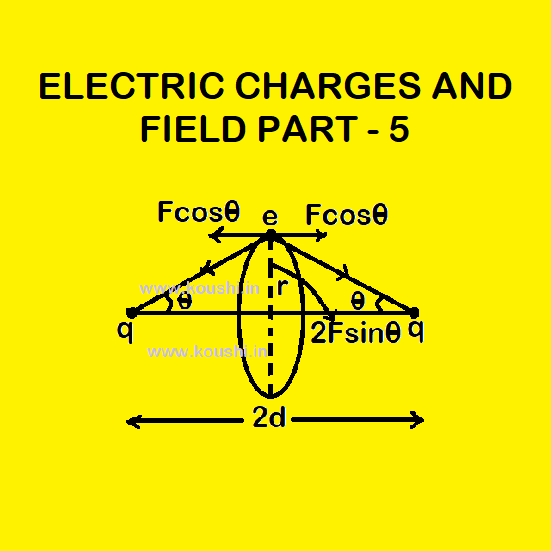5. Oscillation of a charge: Two +q charge particles are placed at point A (0, a) and B (0, -a) on the Y axis and another charge particle –Q is released from rest at point C (b,0) on the X axis. At any instant -Q is at point D of distance x from origin.
*(i) The net force on -Q due to charges at A and B is F/ = 2F cos ![]() = –
= – ![]()
As the force is nonlinear then the motion of charge Q is oscillatory. Amplitude of the charge Q is b.
(ii) If point C is very closed to the origin and a ![]() x then, F/ = –
x then, F/ = – ![]() = –
= – ![]() (using binomial theorem).
(using binomial theorem).
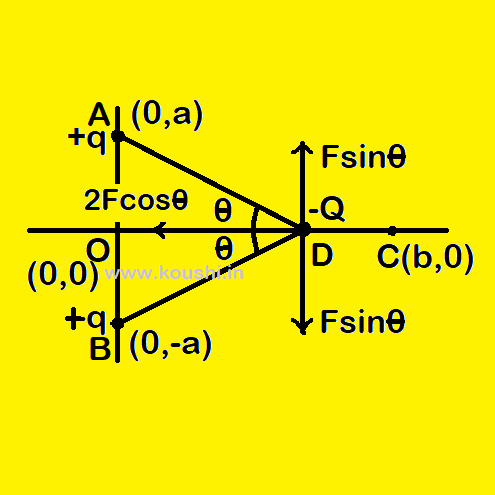
So, the motion of charge -Q is simple harmonic with angular frequency ω = ![]() .
.
(iii) Position of the charge Q where force of attraction is maximum or minimum: ![]() = 0
= 0
Or, – ![]() = 0
= 0
Or, ![]() = 0
= 0
Or, 3x2 = a2 + x2
Or, 2x2 = a2
So, x = ![]() .
.
6. Relation between dielectric constant and density of medium: Two identical balls, each of equal mass m, density ρ and charge q are suspended from a common point by two insulating strings of same length making angle 2θ. Now, both the balls are immersed in a liquid of dielectric constant k and the angle between the strings remain unchanged.
The density of the liquid is σ.
When the charges are in air, T cos ![]() = Mg and T sin
= Mg and T sin ![]() = F
= F
where T = tension on the string and F = force between the charges.
So, F = Mg tan ![]() = Vρg tan
= Vρg tan![]() ——-(i) where V = volume of each charge.
——-(i) where V = volume of each charge.
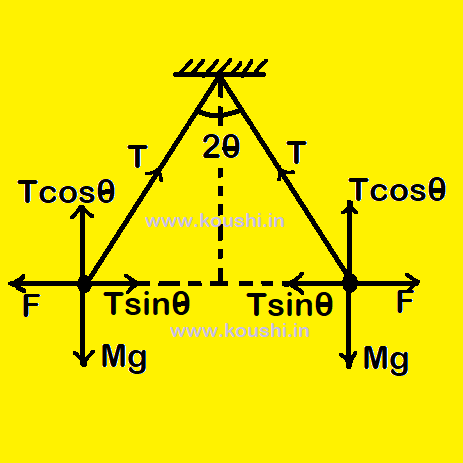
When the charges are in liquid, T/ cos ![]() = (Mg – U) and T/ sin
= (Mg – U) and T/ sin ![]() = F/ where T/ = tension on the string U = buoyant force and F/ = force between the charges.
= F/ where T/ = tension on the string U = buoyant force and F/ = force between the charges.
So, F/ = (Mg – U)tan![]() = (Vρg – Vσg) tan
= (Vρg – Vσg) tan ![]() ——–(ii)
——–(ii)
From, equation (i) and equation (ii) we get, ![]() =
= ![]()
Again F/ = ![]() so, k =
so, k = ![]() .
.
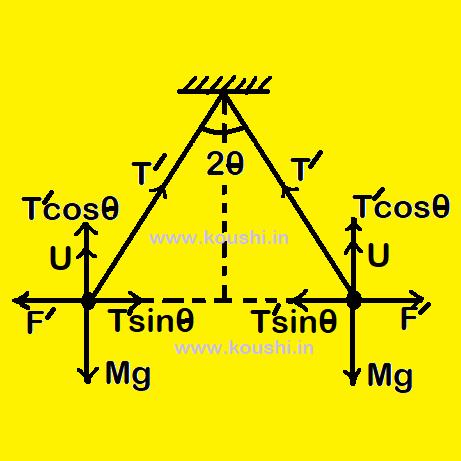
7. Force between two mutually perpendicular charged wires: A uniformly charged wire of length l and linear charge density λ1 is placed perpendicularly with infinitely long charged wire of linear charge density λ2 with a separation r as shown in figure.
The electric field at a distance x from the infinitely long wire is E = ![]()
We consider an elementary length dx of the wire 1 having charge dq = λ1dx.
The force acting on the elementary part is dF = Edq = λ1λ2 ![]()
The force acting on wire 1 due to infinitely long wire is
F = ![]() = λ1λ2
= λ1λ2 ![]()
![]() =
= ![]() In
In ![]() =
= ![]() In
In ![]() .
.
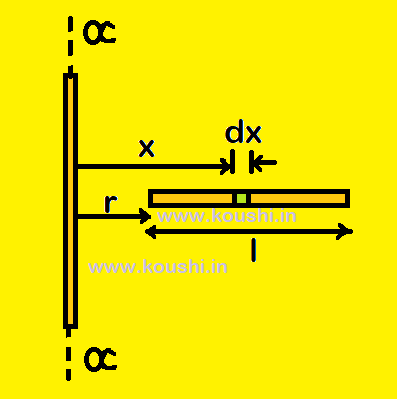
8. Two point charges each of charge q are separated by a distance 2d. An electron of charge e describes a circular path of radius r due to the attraction of the charges in a plane, bisecting perpendicularly the line joining the two point charges. Determine the orbital speed of the electron.
The force of attraction between q and e is F = ![]() .
.
The component of forces acting towards the centre of the circular path is
F/ = 2F sin ![]() =
= ![]()
This force provides the centripetal force to the electron.
If v is the speed of electron, then, ![]() =
= ![]()
![]() v =
v =  .
.
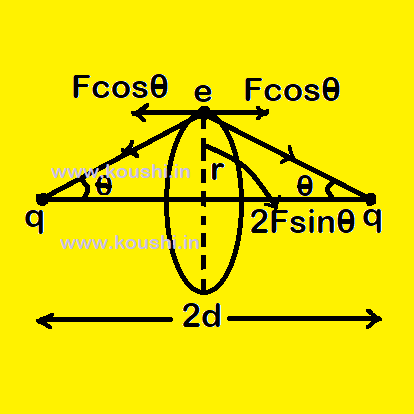
Click the button to go to the next part of this chapter.
Click the button to go to the previous part of this chapter.
